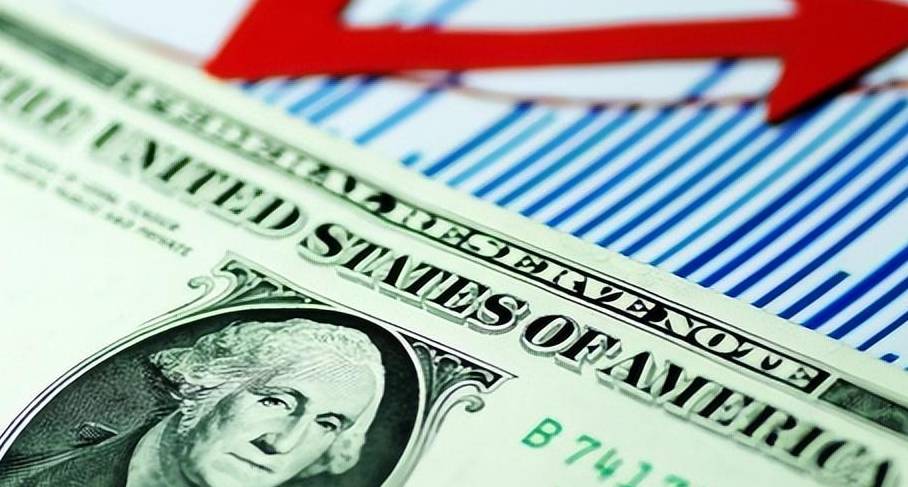U.S. Inflation Decline Set to Slow
December 11, 2024
Advertisements
Recently, the global currency markets have experienced unprecedented turmoil, leading to sharp declines in the Chinese yuan, Russian ruble, and Mexican pesoThis has significantly heightened fears among investors regarding an impending global financial crisisIn particular, the economic policies enacted by the United States government have intensified fluctuations in the exchange rates of major currencies worldwide, resulting in increased market uncertainty.
The recent drops in the yuan, peso, and ruble illustrate a larger market upheaval.
The performance of the Chinese yuan has drawn extensive attention as it recently fell below the 7.27 mark, reaching its lowest point in several years. This decline is closely associated with the escalating tariff threats directed at China
Following announcements of increased tariffs, the yuan's value rapidly dropped, exacerbating market sentiment volatility.
It is not just the yuan that faces significant pressure; other currencies have similarly suffered major declinesThe Mexican peso plunged by nearly 2.7%, reaching a two-year low, while the once-resilient ruble plummeted nearly 8.5% in an unpredictable market, accumulating a drop of more than 12%. This wave of currency collapses underscores the immense turmoil currently gripping the global foreign exchange market.
Emerging U.Sstrategies: tariffs, sanctions, and currency manipulations.
Unlike the traditional tightening of monetary policy by the Federal Reserve and the strengthening dollar, recent U.S
financial strategies have hinged upon a new playbookThe government is not only leveraging tariff threats against countries such as China, Canada, and Mexico but is also intervening in currency markets to manipulate the depreciation of other nations' currencies.
A careful analysis of the past few months reveals an unusual rise in the U.Sdollar index, which surged past the 107-point mark—a peculiar development given the Federal Reserve's decision to cut interest ratesTypically, interest rate cuts lead to the depreciation of the dollar; however, the current scenario exhibits a contrary trend, showcasing the dollar's enduring strengthConcurrently, the currencies of other nations are depreciating, especially exhibiting pronounced drops following explicit threats.
Are we witnessing the early signs of a global financial crisis?
While the Federal Reserve's interest rate cuts have not yet triggered a direct crisis, the violent oscillations in the currency markets suggest that the shadow of a new financial crisis may already be looming on the horizon. Particularly under conditions where the Federal Reserve is simultaneously reducing interest rates and enhancing trade barriers, global economic instability is being further exacerbated.
For the United States, decreasing interest rates may not merely serve as a means of stimulating the economy, but may rather be one of its strategies for “harvesting” global wealth
While interest rates decrease, the strength of the dollar is ultimately attracting global capital towards the U.S., as other nations’ currencies face immense pressure due to depreciation.
For foreign trade-dependent countries like China, Russia, and Mexico, the volatility of exchange rates proves particularly deadlyIn the context of a strong dollar, depreciation in other currencies not only inflates the import costs for these nations, but also risks capital flight, further heightening the threat of an economic crisis.
The global strategy of "uncertainty."
The U.S

government's firm policies are not confined solely to its trade war with China; they are creating waves of uncertainty globally, transforming this uncertainty into a lever for the American economy. With each threat issued, other nations’ currencies face violent fluctuationsFor instance, recent tariff threats have precipitated the dramatic decline of the Mexican peso, while the plunge in Russia’s ruble has caught market attentionThese currency instabilities directly impact international capital flows, prompting investors to withdraw capital in search of "safe haven" assets—primarily the U.Sdollar.
In such an atmosphere, the global market no longer operates based on stable expectations but rather is filled with panic and unease
Under these conditions, policies have instead allowed the dollar to rise contrary to market sentiment, establishing itself as a "safe harbor" for global capital.
How should we respond to the turmoil in global finance?
In light of the current global economic situation, particularly the striking declines in currency values and upheaval in the financial markets, investors and governments alike must remain exceedingly vigilant. Firstly, the volatility of exchange rates and the potential for capital flight pose significant threats to national economies, especially for those reliant on foreign trade
Secondly, countries must bolster their monetary policy autonomy, resisting the influences of U.Sfinancial policies to mitigate the negative impacts of currency fluctuations on their economies.
From an investment standpoint, in the face of such an uncertain economic environment, alternative investments—beyond the "safe haven" of the dollar—such as gold and Bitcoin may present appealing opportunities for capital movementAs turbulence continues to define the global economy, the adaptability of governments and markets will be put to the test.
In conclusion, vigilance and preparation are key; we must stay alert to protect our assets amid this ever-shifting landscape of financial maneuvering and seize emerging opportunities.
By analyzing the roots of the drastic exchange rate fluctuations, we have explored the strategies employed by the United States through tariffs and currency operations, while also alerting readers of the latent risks of financial crises, encouraging preparedness for potential future economic upheavals.
Leave A Comment